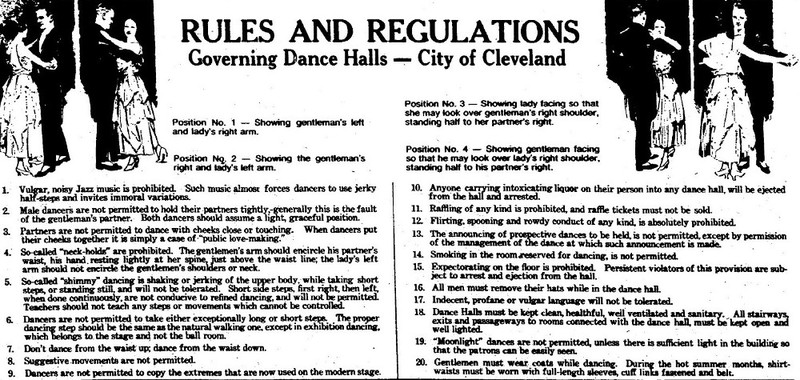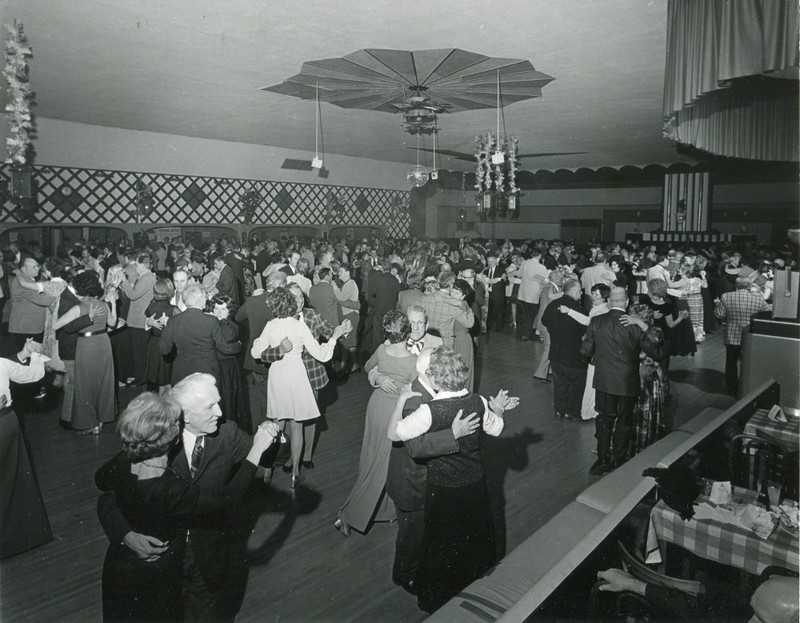
October 22, 1933. The depth of the Great Depression. Thousands of banks have failed over the past four years. The U.S. economy has ground to a near standstill. Nearly 15 million Americans--a quarter of the workforce--are out of work. But there is hope. A new president, Franklin Delano Roosevelt, was elected last November, and just seven months ago he took office, promising change while telling us that the only thing we had to fear was, well, fear itself. Many believed him and believed in him. Some thought things were already starting to get better that year.
The Meyers family may have been among those who believed Roosevelt. But even if they were not, they must have had cause for hope. Three years earlier, 46-year-old George had moved his dance hall from a little building on the corner of Pearl and State roads to a much larger building on the northeast corner of Althen and West 25th Street in what is today Cleveland's Clark-Fulton neighborhood. Erected in 1905 by Cleveland architect Harry A. Cone, the building had served primarily as the site of an indoor roller rink that had operated under a variety of names. In 1929, a fire destroyed the rink. George and his son Lloyd immediately set to work repairing the interior of the building and constructing Cleveland's largest ballroom floor there. It was 150 feet long by 80 feet wide, and composed of two layers of wood, one Appalachian hardwood maple and the other a wooden subfloor, separated from each other by an air space to give "bounce" to the dance floor. In addition to building a band stand up front, they procured and placed enough tables and chairs around the dance floor perimeter to accommodate 100-200 patrons. That really wasn't a lot of seats when you think about it. The dance floor could hold up to 2,000 dancers, and on a typical weekend night over 1,200 might show up. But you came to George's dance hall--originally named Shadyside Gardens--to dance, not so sit.
And come they did. As the Great Depression dragged on, Americans looked to mass entertainment to take their minds, at least for a while, off the terrible reality of the worst economic period in the country's history. Many went to the movies for this escape. Others turned on the radio and listened to their favorite sport or sports team. But a lot of Americans, and certainly a lot of Clevelanders, went to dance halls. There they listened and danced not to the fast-paced jazz music of the Roaring Twenties, but to a new, slower, more romantic music. It was perfect for dancing. It was called Swing and it was the music that helped Americans dance their way through the Great Depression.
The year 1933 was momentous for Americans, but in the end it was a tragic year for George Meyers and his family. Active in politics, he had run for the office of Councilman for Ward 9 but lost in the spring primary. Seven months later, on that October 22, 1933 date which began this article, George Meyers was struck by a car and killed, as he crossed West 25th Street near his dance hall. Hope in the Meyers family might have died that day too, but it didn't. After burying his father, twenty-three-year-old Lloyd Meyers took over the family business and, with him at the helm, the dance hall not only survived but began to thrive. Four years later in 1937, with his finances in order, Lloyd was finally able to marry his longtime girlfriend, Madalene Wilkinson. That same year he decided, possibly with a whisper from Madalene, to change the name of the ballroom to the Aragon, after the famous ballroom with the same name in Chicago. You can say that the rest is history. You wouldn't be far off.
For the next fifty-two years, the Meyers family successfully operated the Aragon Ballroom at the West 25th Street location, making it one of the best places in Cleveland for ballroom dancing. The biggest names in the big band era performed there. Band leaders like Glenn Miller, Guy Lombardo,Tommy Dorsey, Harry James, Sammy Kaye and Xavier Cugat. Even Lawrence Welk, who credited the Meyers for much of his later TV success, brought his orchestra there. Many famous singers also appeared on the marquee. Dean Martin, Perry Como, the McGuire sisters, and many others. For some, it was where they got their start.
Lloyd and Madalene Meyers, with help in later years from their daughter Donna Mae, kept ballroom dancing alive in Cleveland long after rock-n-roll became the new popular music for the young post-World War II generation. One by one Cleveland's other historic ballrooms, seeing their customer base shrinking, closed. The Trianon at East 98th and Euclid. The Golden Pheasant downtown on Prospect. Mayfair Casino at 1515 Euclid. Danceland just up the street from the Trianon. Luna Park. Even the ballroom at Euclid Beach. When Lloyd Meyers died in 1984, his wife and daughter continued on for another five years before finally bowing to the inevitable in 1989. It was the end of not only Cleveland's last ballroom, but of a very special era in Cleveland history.
Audio
Images












